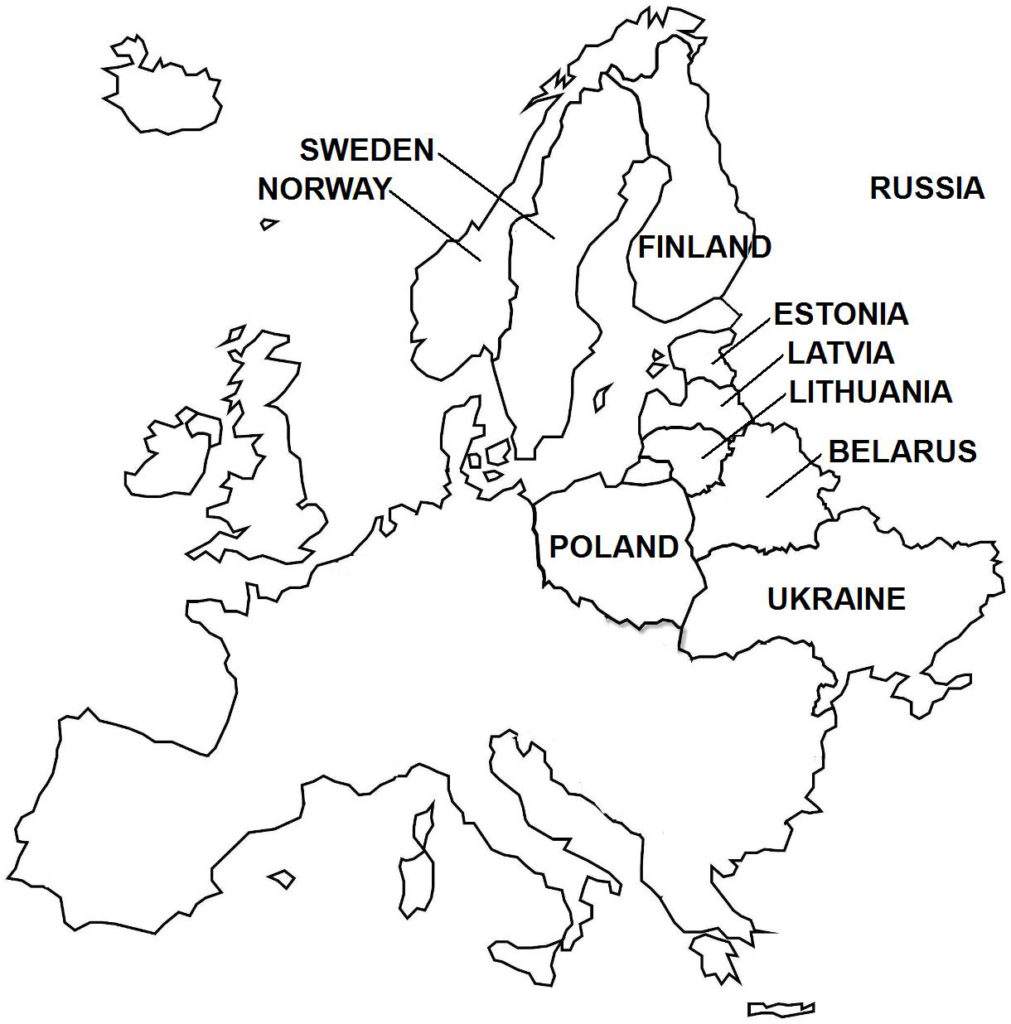On February 2, 1920, Soviet Russia and Estonia signed the Treaty of Tartu, a definitive peace agreement that ended the war. Each side agreed to recognize the sovereignty of the other; for the Estonians particularly, Russia ceased all claims “in perpetuity” of political and territorial sovereignty over Estonia. The border between the two states was agreed to be the region to the east of the Narva River and Setomaa in Russia, roughly corresponding to the battle lines at the end of the fighting, which allowed Estonia to gain a strategic buffer zone inside Russia.

The Russian Civil War was yet ongoing, and the Russian Bolshevik government had agreed to end hostilities with Estonia (and Finland) in order to concentrate greater numbers of the Red Army in other more precarious theaters of the civil war. In the period following the war, Estonia was recognized by more countries and was admitted to the League of Nations in September 1921.
(Taken from Estonian War of Independence – Wars of the 20th Century – Volume 4)
Background In the 16th century, Estonia was annexed by the Swedish Empire following the Livonian War which, in turn, in 1721 ceded the territory to the emerging Russian Empire following the latter’s victory in the Northern Wars. In both Swedish and Russian conquests, the local German authority in Estonia, now comprising the “Baltic German nobility”, was allowed to maintain local rule on behalf of the greater colonial power. By the mid-19th century, as a result of the French Revolution (1789-1799), a wave of nationalism swept across Europe, a phenomenon that touched into Estonia as well. In Estonia, for so long, the German language had predominated in administration and official functions, but for the first time, Estonian nationalists began to revere their own history, language, arts, culture, and traditions. The Russian government’s attempt at “Russification” (cultural and linguistic assimilation into the Russian state) of Estonia was spurned by the local people. The Estonian national identity also was accelerated by other factors: the abolition of serfdom in Estonia in 1816, growth of industrialization and workers’ organizations, increasing prosperity among Estonians who had acquired lands, and the formation of Estonian political movements. The Russian Empire opposed these nationalistic sentiments and enforced measures to suppress them. The political and social unrest that gripped Russia in 1905 further bolstered Estonian nationalism.
On March 30, 1917, one month after the first (February 1917) revolution, Russia’s Provisional Government granted political autonomy to Estonia after merging the Governorate (province) of Estonia and the ethnic Estonian northern portion of the Governorate of Livonia into the political and administrative entity known as the “Autonomous Governorate of Estonia”. An interim body, the Estonian Provincial Assembly (Estonian: Maapäev), was elected with the task of administering the new governorate. Furthermore, the Bolsheviks, on coming to power through the October Revolution, issued the “Declaration of the Rights of the Peoples of Russia” (on November 15, 1917), which granted all non-Russian peoples of the former Russian Empire the right to secede from Russia and establish their own separate states. Eventually, the Bolsheviks would renege on this edict and suppress secession from the Russian state (now known as Russian Soviet Federative Socialist Republic, or RSFSR).
The Provisional Assembly of the Estonian Governorate, determined to implement a democratic form of government, declared itself as the supreme authority in Estonia, which effectively was an act of secession. However, on November 5, 1917, local Estonian Bolsheviks led by Jaan Anvelt seized power in a coup in Tallinn, Estonia’s capital, forcing the Estonian nationalists to disperse and operate clandestinely. Meanwhile in Soviet Russia, the Bolsheviks, whose revolution had succeeded partly on their promises to a war-weary citizenry and military to disengage from World War I, declared its pacifist intentions to the Central Powers. A ceasefire agreement was signed on December 15, 1917 and peace talks began a few days later in Brest-Litovsk (present-day Brest, in Belarus).
German forces occupied Estonia, Latvia, Lithuania, Belarus, Ukraine, and Poland, establishing semi-autonomous governments in these territories that were subordinate to the authority of the German monarch, Kaiser Wilhelm II. The German occupation allowed the realization of the Germanic vision of “Mitteleuropa”, an expansionist ambition that sought unification of Germanic and non-Germanic peoples of Central Europe into a greatly enlarged and powerful German Empire. In support of Mitteleuropa, in the Baltic region, the Baltic German nobility proposed to set up the United Baltic Duchy, a semi-autonomous political entity consisting of (present-day) Estonia and Latvia that would be voluntarily integrated into the German Empire. The proposal was not implemented, but German military authorities set up local civil governments under the authority of the Baltic German nobility or ethnic Germans.
After Germany’s capitulation in November 1918, Russia repudiated the Treaty of Brest-Litovsk and made plans to seize the European territories it previously had lost to the Central Powers. An even far more reaching objective was for the Bolshevik government to spread the communist revolution to Europe, first by linking up with German communists who were at the forefront of the unrest that currently was gripping Germany. Russian military planners intended the offensive to merely follow in the heels of the German withdrawal from Eastern Europe (i.e. to not directly engage the Germans in combat) and then seize as much territory before the various ethnic nationalist groups in these territories could establish and consolidate a civilian government.
Starting on November 28, 1918, in the action known as the Soviet westward offensive of 1918-1919, Soviet forces consisting of hundreds of thousands of troops advanced in a multi-pronged offensive toward the Baltic region, Belarus, Poland, and Ukraine.
